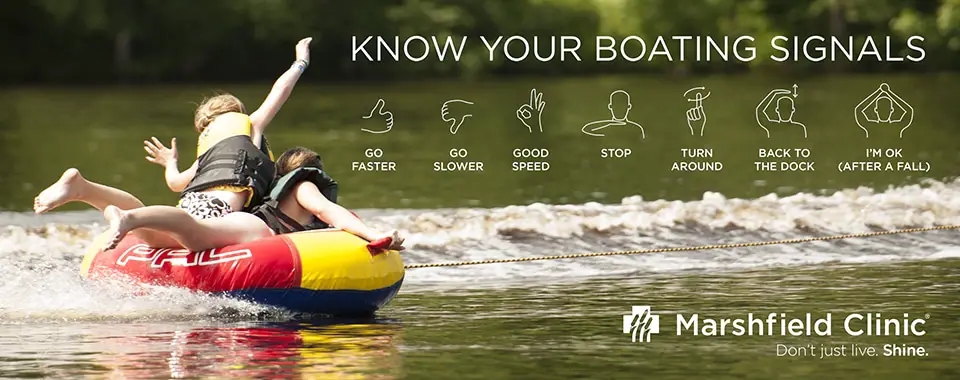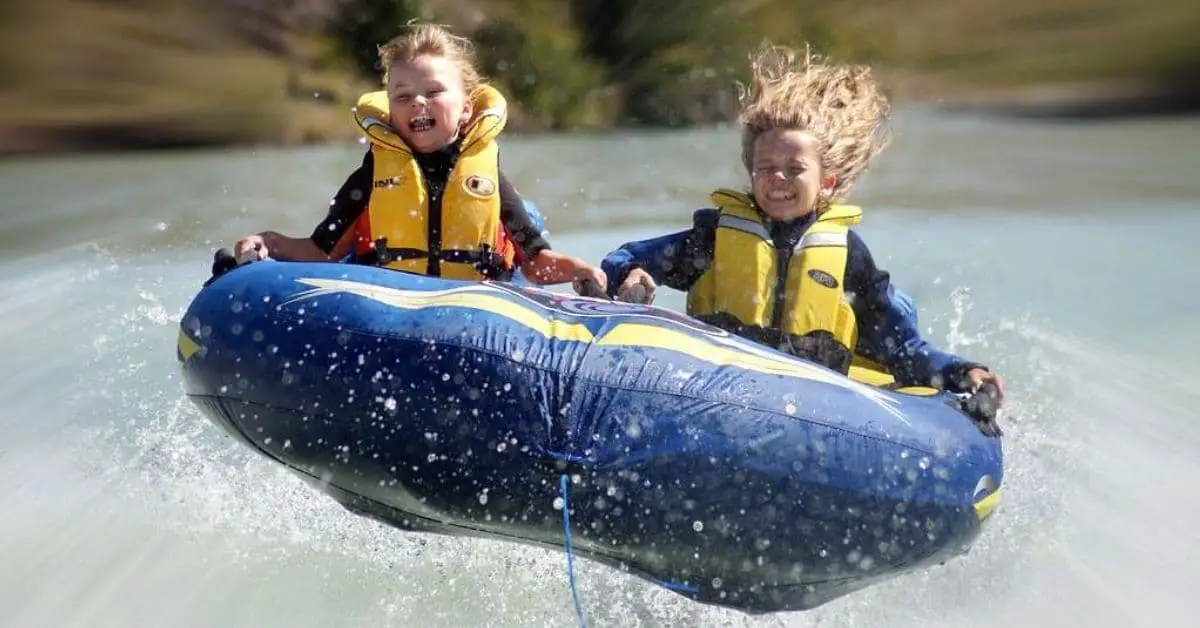Although tubing is many times viewed as safe when compared to other water activities such as wakeboarding and water skiing, it actually is just as dangerous if not more dangerous. A study from the National Institutes of Health showed that tubing actually led to a higher chance of severe injury when compared to water skiing.
Not only are severe injuries happening, but according to another study from the National Institutes of Health, the most common injuries are sprains and strains (making up around 27% of tubing injuries).
Almost all tubing injuries happen because people do not know how to be safe out on the water. Being safe does not have to reduce your fun, though. There are plenty of ways to have fun and be safe at the same time.
How to be safe when tubing
- Make sure all lifejackets fit properly. Check the weight range and be sure that your child or whoever is using the life jacket fits properly into it. Life jackets that completely don’t fit could be just around the same as no life jackets at all.
- Check your equipment. Make sure your ropes aren’t frayed or tubes don’t have any rips or holes in them.
- Limit the number of riders to no more than the manufacture’s safety recommendation. According to ahchealthenews.com, youth head injuries were most likely caused by having too many riders on the tube.
- Have the rider learn all the hand signals. Check them out below from Marshfield Clinic.

- Find open water with few boats around. The last thing you want is someone falling out and a boat running them over on accident when they are in the water.
- Drive cautious in large waves. Although it’s fun if the waves are sending the riders extremely high in the air, it’s not a good idea to speed up or drive crazier. Big waves can cause head bonks which can lead to serious head damage.
- Don’t drive much faster than 20-25 mph. Kids will many times scream “faster, faster!” but sometimes safety is more important. The faster you go, the tube rider will have more momentum when hitting the water or another person, which makes injuries more likely.
- Have a spotter that’s always watching. The best spotter for your kids is always mom because you know she’s not going to go a second without watching.
- Consider having riders wear a helmet. Wakeboarding helmets such as this one on Amazon will protect the rider’s heads from getting injured. Head injuries occur usually by 2 riders bonking heads together.
Is tubing more dangerous than water skiing or wakeboarding?
Many believe that tubing is safer than other water activities such as skiing and wakeboarding, but is this true? A study done by the Journal of Sports Science and Medicine showed that tubing injuries are over 2 times more likely to be severe compared to water skiing injuries (usually head injuries). Wakeboarding also had a similar rate to tubing when it came to severe injuries.
But the study also showed that people are less likely to get injured tubing than when compared to wakeboarding and water skiing. Wakeboarding equaled 1.33 per 100,000 people injury rate, water skiing equaled 1.51 per 100,000, and tubing equaled 0.57 per 100,000.
So injuries are less common when tubing than water skiing or wakeboarding, but the injuries are more likely to be severe than water skiing. Wakeboarding injuries are also more likely to be severe than water skiing.
What are the safest tubes?
Although tubing safe mostly has to do with the way the driver drives and the number of riders on one tube, the type of tube is also important. Laying down tubes are generally much safer than sit down ones. This is because head bonking happens much more when you are sitting down. Your body is going to swing harder, and it’s more difficult to slow your momentum when sitting down compared to laying down.
The Airhead G-Force is a very popular and safe tube that I would recommend getting. You can check it out on Amazon by clicking this link here. Make sure to get the correct size for the number of riders you will have.
How to still have fun while tubing safely
Not everyone will have fun just tubing straight and slow, but there are still ways to have safe fun while tubing. As long as the riders are wearing helmets and life jackets, crazy tubing is much safer. Although, crazy tubing leads to a higher chance the rider gets sprains or strains in their ankle, wrist, etc.
Otherwise, solo tubing and laying down tubes are usually safer than sit down tubes such as the Big Mable. Solo tubing avoids the chance of your riders bumping heads into each other.
Additional things the boat captain should know when towing a tube
- Don’t tow a tube in a no-wake zone. Most places have laws that don’t allow you to tow in these areas. Along with that, when you stop, the tube will continue to drift forward. It’s unlikely that the tube will go into the motor, but the line could loosen and get tangled up in the propeller very easily.
- Watch out for sand bars, rock piles, etc. The last thing you want happening is your boat running into the ground while towing a tube. Also, if a rider falls off, you don’t want them hitting the ground or a rock pile, which would almost guarantee an injury.
- Keep your distance from fisherman and anchored boats. This one is pretty self-explanatory.
- Even though it’s hard, avoid constantly watching the tube riders. Driving safely needs to be your number one priority. It’s the spotter’s job to watch the kids, just ask them to take some videos.
What is a safe age to start tubing?
The youngest age you should have riding on a tube is 2 to 3 years old. Make sure to have an adult with them and go slow. Also, I would recommend getting a big tube, so it will be more difficult for the child to fall off.
I would be surprised if you could even get them on the tube. Most kids at that age will be very scared, so you might need to wait until they are a bit older.
Once your kid is about 4 to 5 years old, you can start to let them go out without an adult on the tube. Obviously, don’t drive very fast and crazy when there this young.
Can tubing be deadly?
The US Coast Guard reported that there were a total of 15 deaths in 2018 from towed watersports. Operator inattention, improper lookout, operator inexperience, machinery failure, and excessive speed were the top 5 contributing factors that lead to these accidents.
So based on this information, yes tubing can be deadly, but it is extremely unlikely. As long as you take proper precautions and don’t get extremely unlucky, it won’t happen to you.
Does the boat have any affect on tubing safety?
Mostly all skiing boats, fishing boats, and PWC’s are all just as safe as each other for pulling tubes, but some wakeboarding boats may not be. The high attachment on a wakeboarding boat can cause the tube to go much higher in the air after it goes airborne from a wave. This could cause a hard fall, which can lead to head injuries.
Also, wakeboarding boats may have a higher wake that could cause more injuries as well. The higher wake leads to a higher chance the tube will go airborne. Although, as long as you aren’t purposely trying to get a ton of air, you should be fine.
Another thing to note is some PWC’s might have separate laws that dictate how many people you can tow. So make sure you check your state laws if you plan on towing many people behind a PWC.
- What Is The Cheapest Way To Store A Boat? - February 28, 2023
- Do Boats Need Bottom Paint? (Uncovering the Truth) - February 2, 2023
- How Much Is Bass Boat Insurance? (Real Quotes) - January 18, 2023

